Thanks for starting this thread Jerry. As always... great stuff!!!!
Announcement
Collapse
No announcement yet.
The making of a 1936 Knucklehead springer front end
Collapse
X
-
If he is ever going to have that bike judged you had better remove the brake anchor. Clean away all the weld and braze it on.Be sure to visit;
http://www.vintageamericanmotorcycles.com/main.php
Be sure to register at the site so you can see large images.
Also be sure to visit http://www.caimag.com/forum/
Comment
-
If I may ask , what are all the 36 only characteristics of a springer, I ask because I have one and was told by a few collectors that there are several differences including the brake anchor mount , the little dent in the side of the main beam just above the curve, the little groove on the inside of the neck stem ,narrow fender mounts, and yes the little out sweep of both main legs, any others ??, or do I not know what the he:: I am talking about, thanks.
Comment
-
I do not know of any springer characteristics that are totally unique to 1936. There are a handful like you mentioned that for sure are considered early. I guess I have to admit I do not know about "the little dent in the side of the main beam just above the curve". The one you did not mention is the location of the brake cable clip threaded hole on the left side of the main bridge. That an some assembly technique differences.Originally posted by riverbend View PostIf I may ask , what are all the 36 only characteristics of a springer, I ask because I have one and was told by a few collectors that there are several differences including the brake anchor mount , the little dent in the side of the main beam just above the curve, the little groove on the inside of the neck stem ,narrow fender mounts, and yes the little out sweep of both main legs, any others ??, or do I not know what the he:: I am talking about, thanks.
I have at least the remains of 4 or 5 very early OHV springers that I am using for a guide. I am sure that if I miss any of the unique things about an early one at least a couple of guys will jump me about it.
JerryLast edited by Jerry Wieland; 12-19-2013, 10:37 PM.
Comment
-
Today I got a little more welding done. I found a couple of small dents in the left leg by the brake anchor and decided to weld them shut.

Then I ground them close to flush using a floppy disc type grinder. The very final metal removal I do on something like this is with a good flat file. It allows slow accurate removal of high spots in the metal.
I believe the common file is one of the most important tools a guy can have on a job like this.
Speaking of which does anybody know where or from who a good 'flat' flat file can be gotten. Most files today actually have a slight cup to them which makes the art of filing a lot more difficult.
Jerry
Comment
-
Here is what the weld looked like after I had removed most of the high spots. For some reason my camera must have malfunctioned or I accidentially erased it when I took the pictures immediately after I had gotten done with the disc grinding.
The side of the leg is done with the metal prepping but you can still slightly see where the weld bead was on the upper part. I cannot emphasize enough how careful to be here when removing metal. There is not that much to begin with so none of the parent metal must be removed.
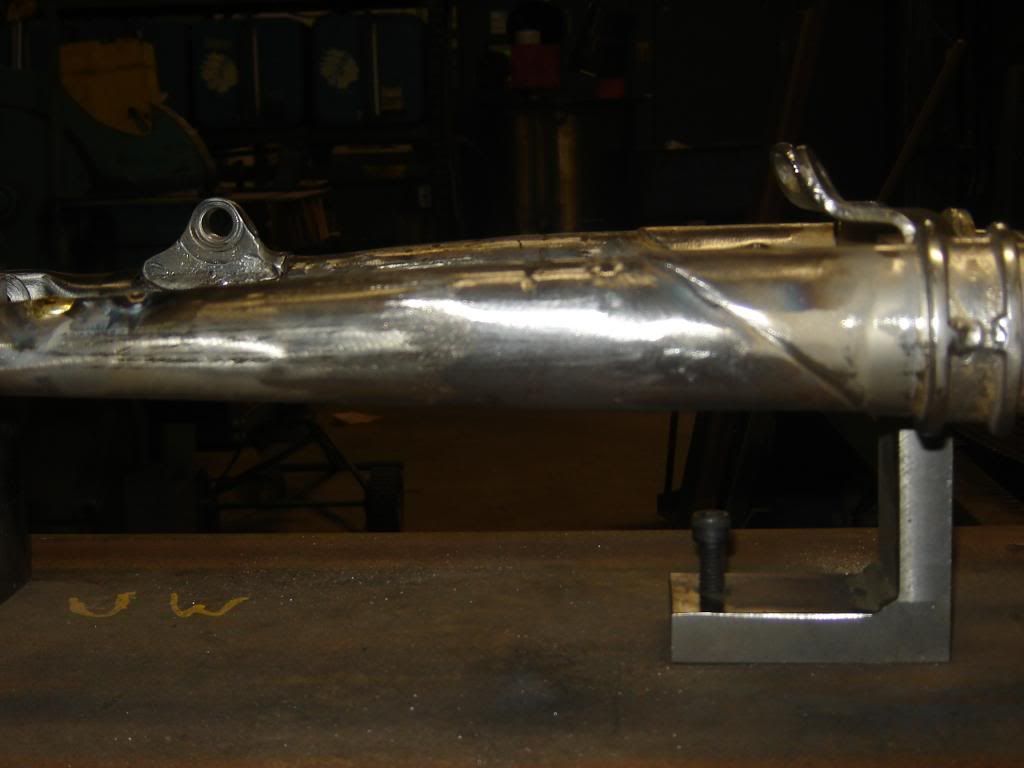
Just some more photos before I quit for the night.
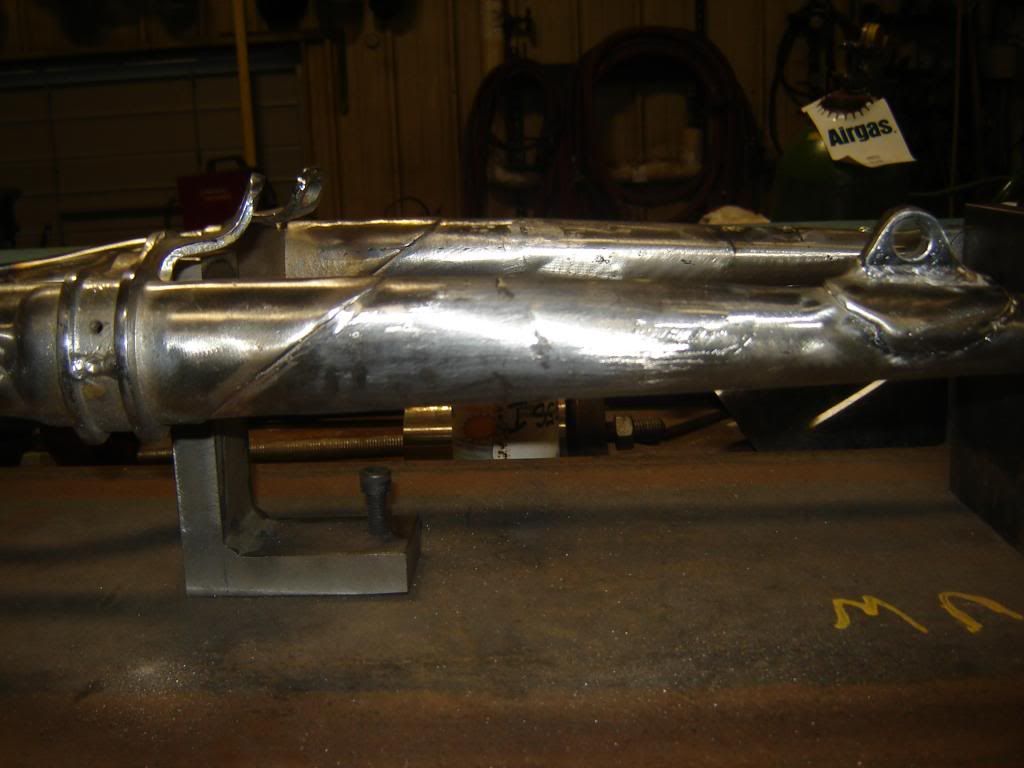
 Last edited by Jerry Wieland; 12-20-2013, 10:57 PM.
Last edited by Jerry Wieland; 12-20-2013, 10:57 PM.
Comment
-
go here for files. these are made for the jewelery industry. swiss made.
http://www.stuller.com/browse/tools-...-by-shape/flat
Comment
-
This is what the left side of the main brace looks like on an early springer. This springer is my NOS 1937 rear leg that has the narrow reinforced fender tabs. Right side looks the same only without the threaded hole.

This next picture shows what the right leg of the springer I am working on looks like - so we need to do some doctoring on them.
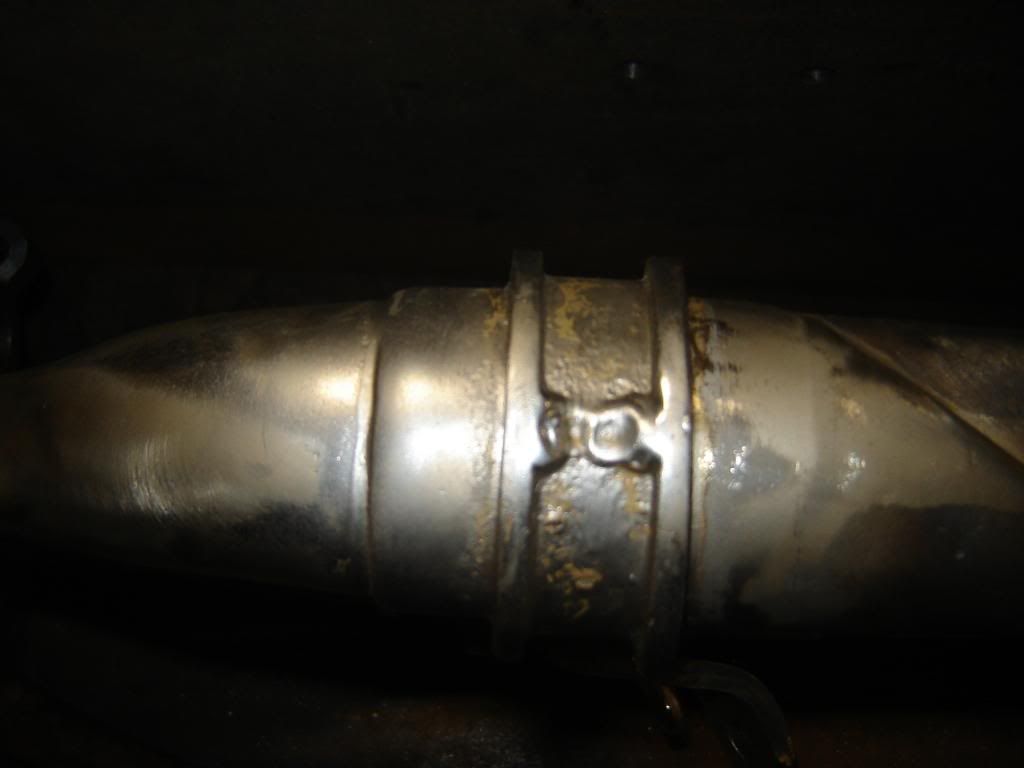
This is a picture of the right leg after I've done the necessary grinding and finishing.
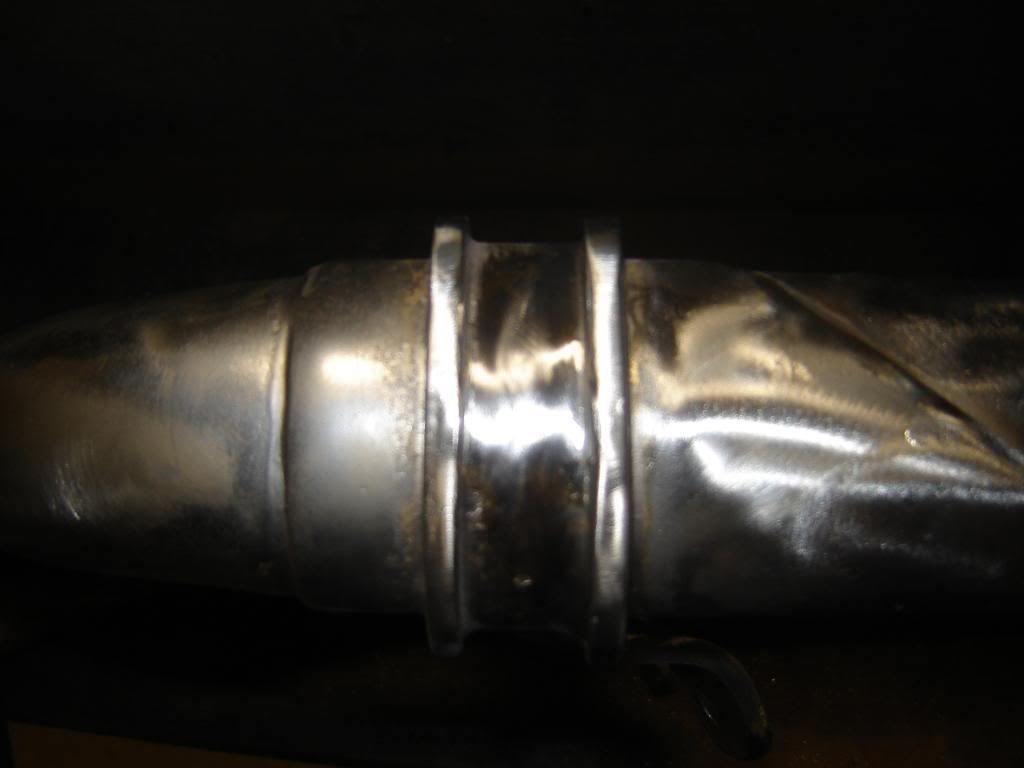
My camera seems to be eating pictures again but anyway I was supposed to have a picture of this left leg only before I had done any finish work.
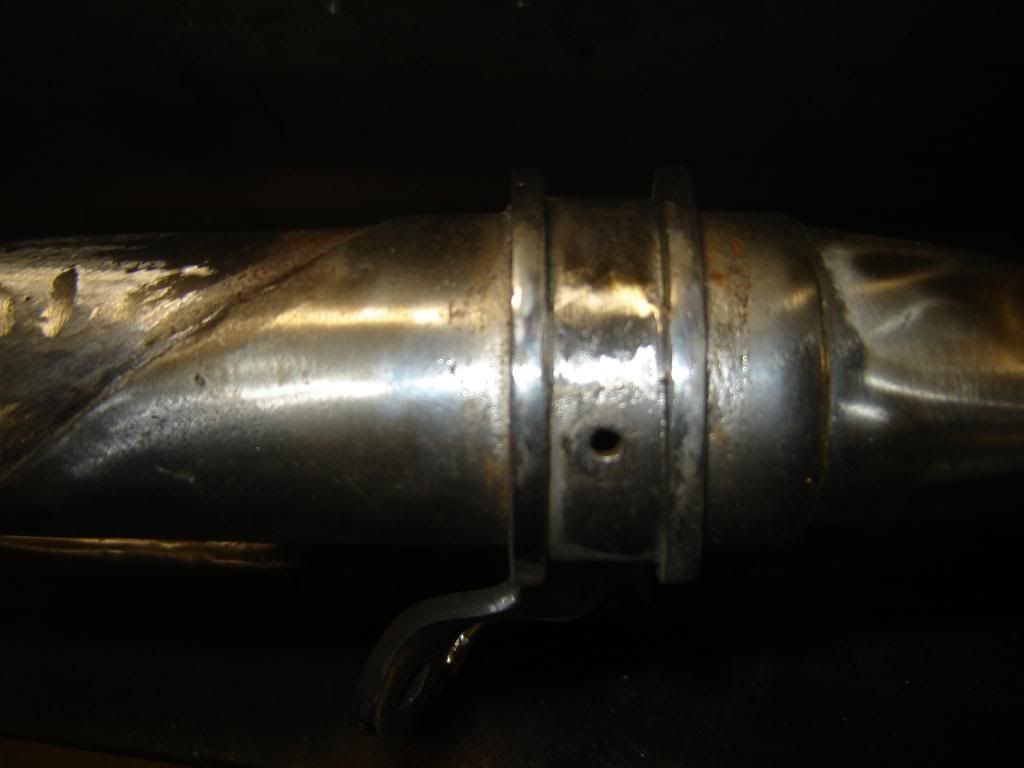
Here is after I've welded the hole up and did most of the finishing.
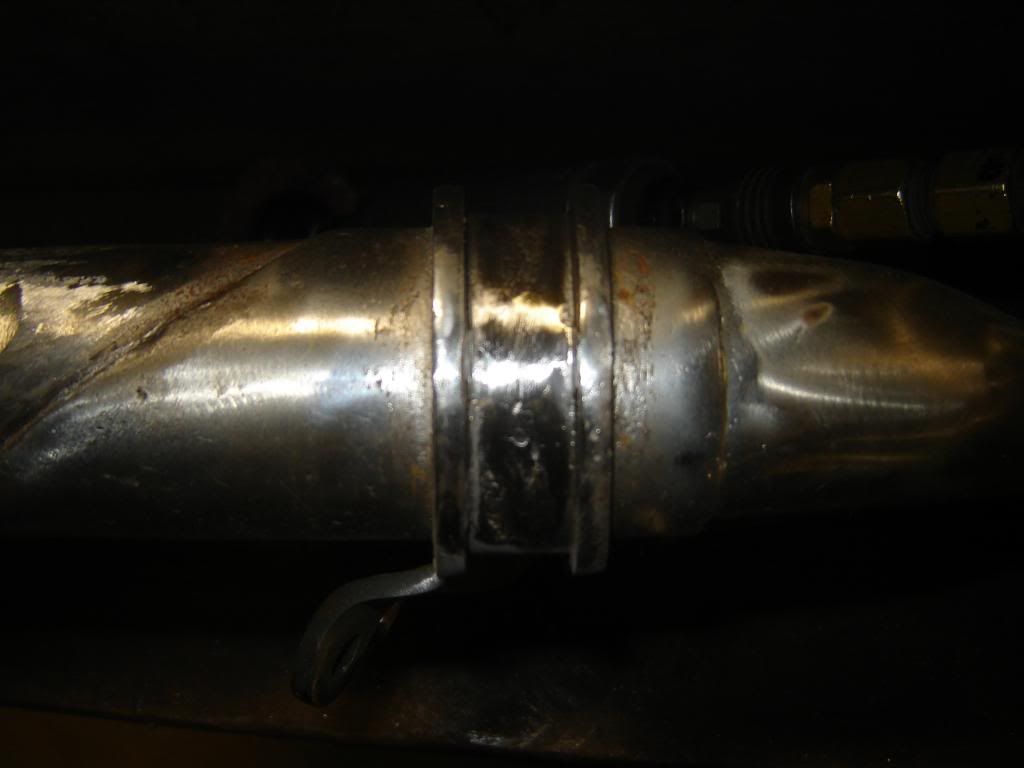
I do not think that the difference shown here was a matter of cosmetic or attention to detail as much as it was a difference in assembly technique. The early springers were almost entirely brazed and the later springers were partially welded. Braze joints by their very nature tend to lay flatter than a welded joint.
Again I was supposed to have a picture of the threaded hole being in the center of the leg but when I got the camera home it was not to be found. Rest assured it was done.
JerryLast edited by Jerry Wieland; 12-20-2013, 10:44 PM.
Comment
-
[QUOTE
Speaking of which does anybody know where or from who a good 'flat' flat file can be gotten. Most files today actually have a slight cup to them which makes the art of filing a lot more difficult.
Jerry[/QUOTE]
Jerry, I use Nicholson 'Mill Bastard' on a daily basis. I do not find them to have a 'slight cup'. I like the 6" size. They are made in the USA still and are available through MSC. Bob#6738Bob Rice #6738
Comment
-
Bob The files I am using now are actually Nicholson Mill Bastard (somehow I have never like that expression) files and for the most part they are good but even they make a cupped one on occasion. I have been buying them at my local farm supply store. If they say anything but 'Made in USA' I usually walk right on by. Especially if they say Pakistan, India, Bangladesh, Taiwan, China, Brazil, Argentina or a few other places.Originally posted by BigLakeBob View Post
Jerry, I use Nicholson 'Mill Bastard' on a daily basis. I do not find them to have a 'slight cup'. I like the 6" size. They are made in the USA still and are available through MSC. Bob#6738
Jerry
Comment
-
Jerry, Nice work!
Riverbend, I'm not understanding what you mean by "the little dent in the side of the main beam just above the curve, the little groove on the inside of the neck stem". Can you or anyone else explain what this is? I was only aware of the 36 cable mount screw hole, narrow fender braces, grease fitting locations and brazed non- casted brake anchor.Thanks
Comment

Comment